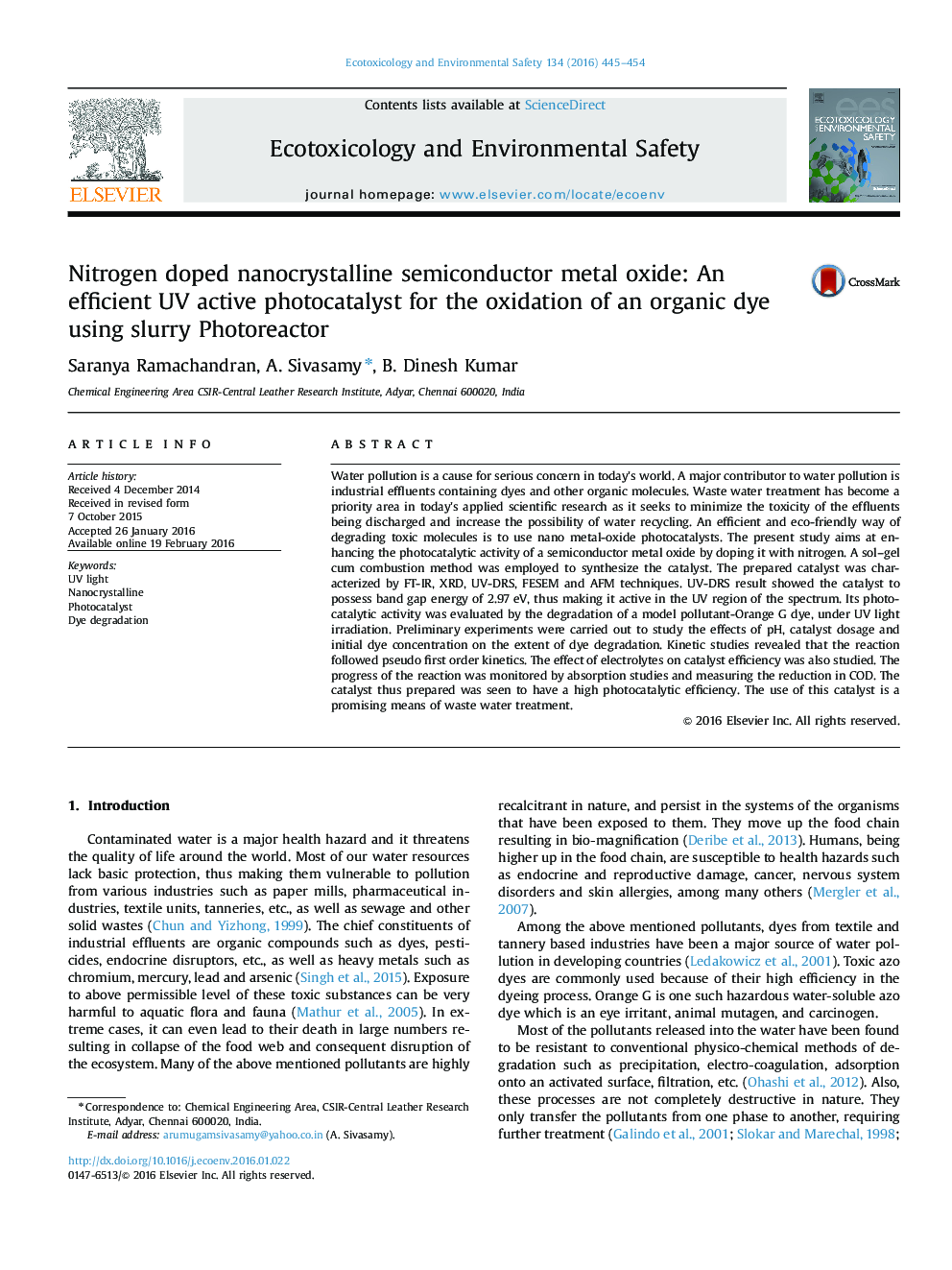| کد مقاله | کد نشریه | سال انتشار | مقاله انگلیسی | نسخه تمام متن |
|---|---|---|---|---|
| 5748109 | 1412448 | 2016 | 10 صفحه PDF | دانلود رایگان |

- N-doped ZnO was synthesized by an easy sol gel cum combustion method.
- Prepared catalyst was highly crystalline with an average crystallite size of 70Â nm.
- Calculated band gap energy of 2.97Â ev, which is lower than that for pristine ZnO.
- Surface roughness (9.71Â nm) is many fold higher than for ZnO.
- N-doped ZnO shows enhanced UV light photocatalytic activity.
Water pollution is a cause for serious concern in today's world. A major contributor to water pollution is industrial effluents containing dyes and other organic molecules. Waste water treatment has become a priority area in today's applied scientific research as it seeks to minimize the toxicity of the effluents being discharged and increase the possibility of water recycling. An efficient and eco-friendly way of degrading toxic molecules is to use nano metal-oxide photocatalysts. The present study aims at enhancing the photocatalytic activity of a semiconductor metal oxide by doping it with nitrogen. A sol-gel cum combustion method was employed to synthesize the catalyst. The prepared catalyst was characterized by FT-IR, XRD, UV-DRS, FESEM and AFM techniques. UV-DRS result showed the catalyst to possess band gap energy of 2.97Â eV, thus making it active in the UV region of the spectrum. Its photocatalytic activity was evaluated by the degradation of a model pollutant-Orange G dye, under UV light irradiation. Preliminary experiments were carried out to study the effects of pH, catalyst dosage and initial dye concentration on the extent of dye degradation. Kinetic studies revealed that the reaction followed pseudo first order kinetics. The effect of electrolytes on catalyst efficiency was also studied. The progress of the reaction was monitored by absorption studies and measuring the reduction in COD. The catalyst thus prepared was seen to have a high photocatalytic efficiency. The use of this catalyst is a promising means of waste water treatment.
Journal: Ecotoxicology and Environmental Safety - Volume 134, Part 2, December 2016, Pages 445-454